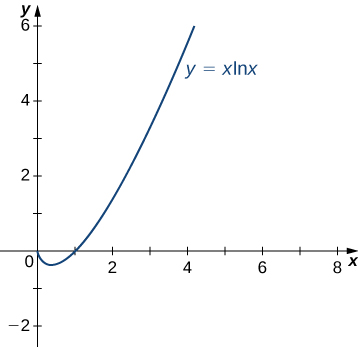| << Chapter < Page | Chapter >> Page > |
As mentioned, L’Hôpital’s rule is an extremely useful tool for evaluating limits. It is important to remember, however, that to apply L’Hôpital’s rule to a quotient it is essential that the limit of be of the form or Consider the following example.
Consider Show that the limit cannot be evaluated by applying L’Hôpital’s rule.
Because the limits of the numerator and denominator are not both zero and are not both infinite, we cannot apply L’Hôpital’s rule. If we try to do so, we get
and
At which point we would conclude erroneously that
However, since and we actually have
We can conclude that
Explain why we cannot apply L’Hôpital’s rule to evaluate Evaluate by other means.
Therefore, we cannot apply L’Hôpital’s rule. The limit of the quotient is
L’Hôpital’s rule is very useful for evaluating limits involving the indeterminate forms and However, we can also use L’Hôpital’s rule to help evaluate limits involving other indeterminate forms that arise when evaluating limits. The expressions and are all considered indeterminate forms. These expressions are not real numbers. Rather, they represent forms that arise when trying to evaluate certain limits. Next we realize why these are indeterminate forms and then understand how to use L’Hôpital’s rule in these cases. The key idea is that we must rewrite the indeterminate forms in such a way that we arrive at the indeterminate form or
Suppose we want to evaluate where and (or as Since one term in the product is approaching zero but the other term is becoming arbitrarily large (in magnitude), anything can happen to the product. We use the notation to denote the form that arises in this situation. The expression is considered indeterminate because we cannot determine without further analysis the exact behavior of the product as For example, let be a positive integer and consider
As and However, the limit as of varies, depending on If then If then If then Here we consider another limit involving the indeterminate form and show how to rewrite the function as a quotient to use L’Hôpital’s rule.
Evaluate
First, rewrite the function as a quotient to apply L’Hôpital’s rule. If we write
we see that as and as Therefore, we can apply L’Hôpital’s rule and obtain
We conclude that

Another type of indeterminate form is Consider the following example. Let be a positive integer and let and As and We are interested in Depending on whether grows faster, grows faster, or they grow at the same rate, as we see next, anything can happen in this limit. Since and we write to denote the form of this limit. As with our other indeterminate forms, has no meaning on its own and we must do more analysis to determine the value of the limit. For example, suppose the exponent in the function is then

Notification Switch
Would you like to follow the 'Calculus volume 1' conversation and receive update notifications?